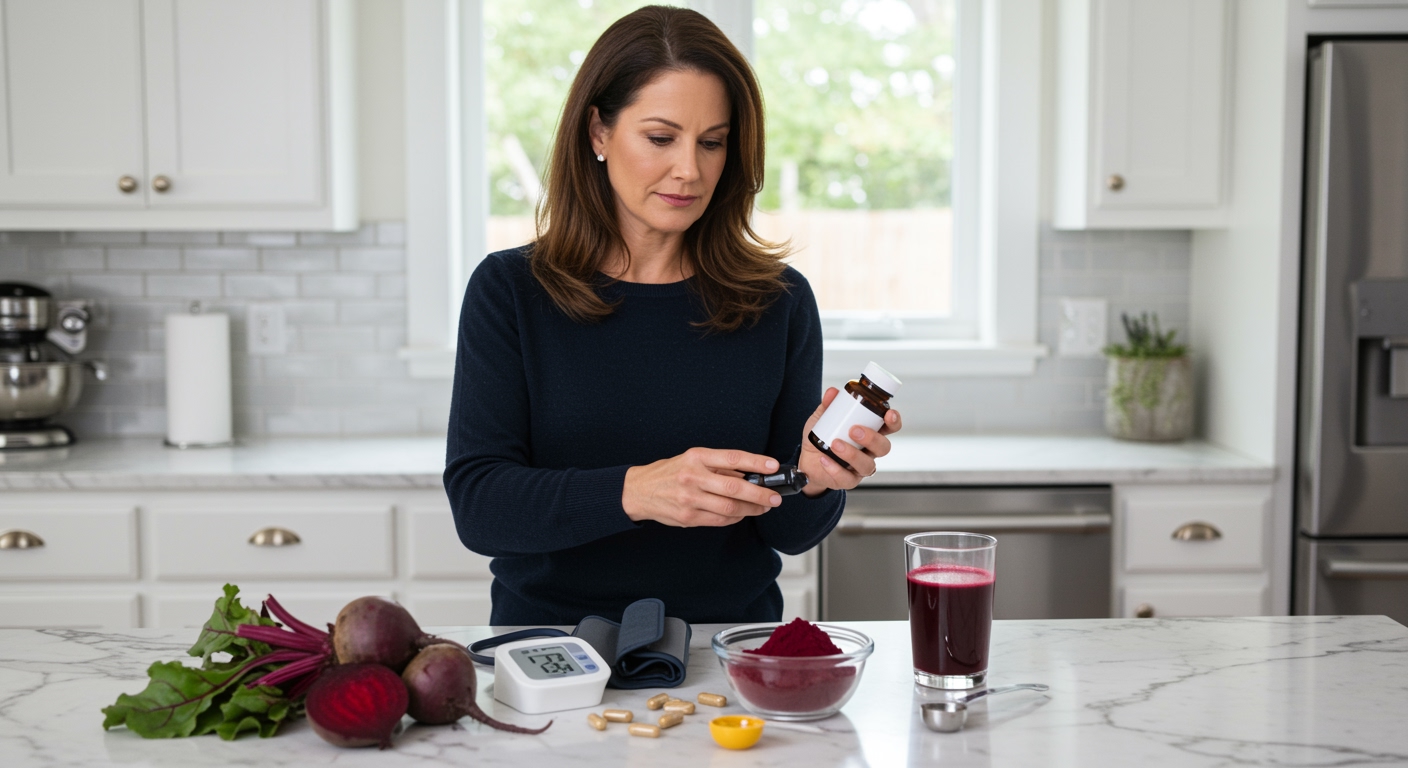✪ Key Takeaway: Dragon fruit may help lower blood pressure through potassium and antioxidants, but evidence remains limited.
Introduction
Dragon fruit has exploded onto the health scene with bold claims about lowering blood pressure naturally.
You might be wondering if this exotic pink fruit can actually help manage your cardiovascular health, especially when traditional medications come with unwanted side effects.
Hi, I’m Abdur, your nutrition coach and today I’m going to explain exactly what science tells us about dragon fruit and blood pressure management.
What Makes Dragon Fruit Special for Blood Pressure?
Dragon fruit contains several compounds that could theoretically support healthy blood pressure levels.
The fruit provides approximately 350 milligrams of potassium per 100-gram serving, which represents about 10% of your daily needs.
Potassium works by helping your kidneys remove excess sodium through urine, which reduces the volume of fluid in your blood vessels.
Dragon fruit also contains betalains, the same antioxidant compounds found in beets that give the fruit its vibrant color.
These betalains may help reduce inflammation in blood vessel walls, potentially improving their ability to relax and contract properly.
The fruit provides vitamin C and magnesium, both nutrients that support cardiovascular function through different mechanisms in your body.
✪ Fact: One cup of dragon fruit contains more potassium than a medium banana.
Does Research Support These Claims?
The scientific evidence for dragon fruit specifically lowering blood pressure remains surprisingly limited.
Most studies focus on individual nutrients found in dragon fruit rather than the whole fruit itself.
Research shows that potassium-rich diets can reduce systolic blood pressure by 3-5 mmHg in people with hypertension.
However, you would need to eat large quantities of dragon fruit daily to achieve the potassium levels used in these studies.
Some animal studies suggest that betalain compounds may have vasodilatory effects, meaning they help blood vessels relax.
But translating these findings to humans requires much more research before we can make definitive claims about dragon fruit’s blood pressure benefits.
✪ Note: Most dragon fruit studies focus on antioxidant activity rather than cardiovascular effects.
How Much Dragon Fruit Would You Need?
To get meaningful amounts of blood pressure-supporting nutrients from dragon fruit alone, you would need substantial daily portions.
For significant potassium intake, you would need approximately 2-3 whole dragon fruits per day.
This amount would provide about 1000-1500 milligrams of potassium, which represents roughly one-third of the recommended daily intake.
However, eating this much dragon fruit daily would also mean consuming significant amounts of natural sugars and calories.
Each dragon fruit contains approximately 60 calories and 13 grams of natural sugars, mainly glucose and fructose.
For people managing diabetes alongside high blood pressure, this sugar content becomes an important consideration in meal planning.
The practical reality is that most people would find it difficult and expensive to consume therapeutic amounts of dragon fruit consistently.
✪ Pro Tip: Combine dragon fruit with other potassium-rich foods for better cardiovascular support.
What About Dragon Fruit Compared to Other Options?
When comparing dragon fruit to other blood pressure-friendly foods, several alternatives provide more proven benefits.
Bananas contain similar potassium levels but cost significantly less and have more extensive research supporting their cardiovascular benefits.
Beetroot juice has clinical studies showing it can reduce blood pressure by 4-10 mmHg within hours of consumption.
Leafy greens like spinach and kale provide more potassium per serving than dragon fruit while also offering nitrates that support blood vessel function.
Pomegranates have extensive research demonstrating their ability to improve endothelial function and reduce arterial stiffness.
The DASH diet, which emphasizes fruits, vegetables, and low-fat dairy, has proven clinical results for lowering blood pressure by 8-14 mmHg.
Dragon fruit can certainly be part of this approach, but it should not be viewed as a standalone solution for blood pressure management.
✪ Fact: Beetroot juice shows measurable blood pressure reduction within 3-6 hours of consumption.
The Bottom Line
Dragon fruit contains nutrients that support cardiovascular health, but the evidence for significant blood pressure reduction remains weak compared to other proven dietary approaches.
Real health comes from consistent patterns, not exotic superfoods, and dragon fruit works best as part of a comprehensive dietary strategy rather than a magic bullet solution.
I would love to hear about your experiences with dragon fruit or any questions you have about natural approaches to blood pressure management in the comments below.
References
At NutritionCrown, we use quality and credible sources to ensure our content is accurate and trustworthy. Below are the sources referenced in creating this article:
- PubMed: Dragon Fruit Nutritional Analysis
- PMC: Potassium and Cardiovascular Health
- Klarity Health: Dragon Fruits Impact on Blood Pressure
- PJMHS Online: Antioxidant Properties of Dragon Fruit





